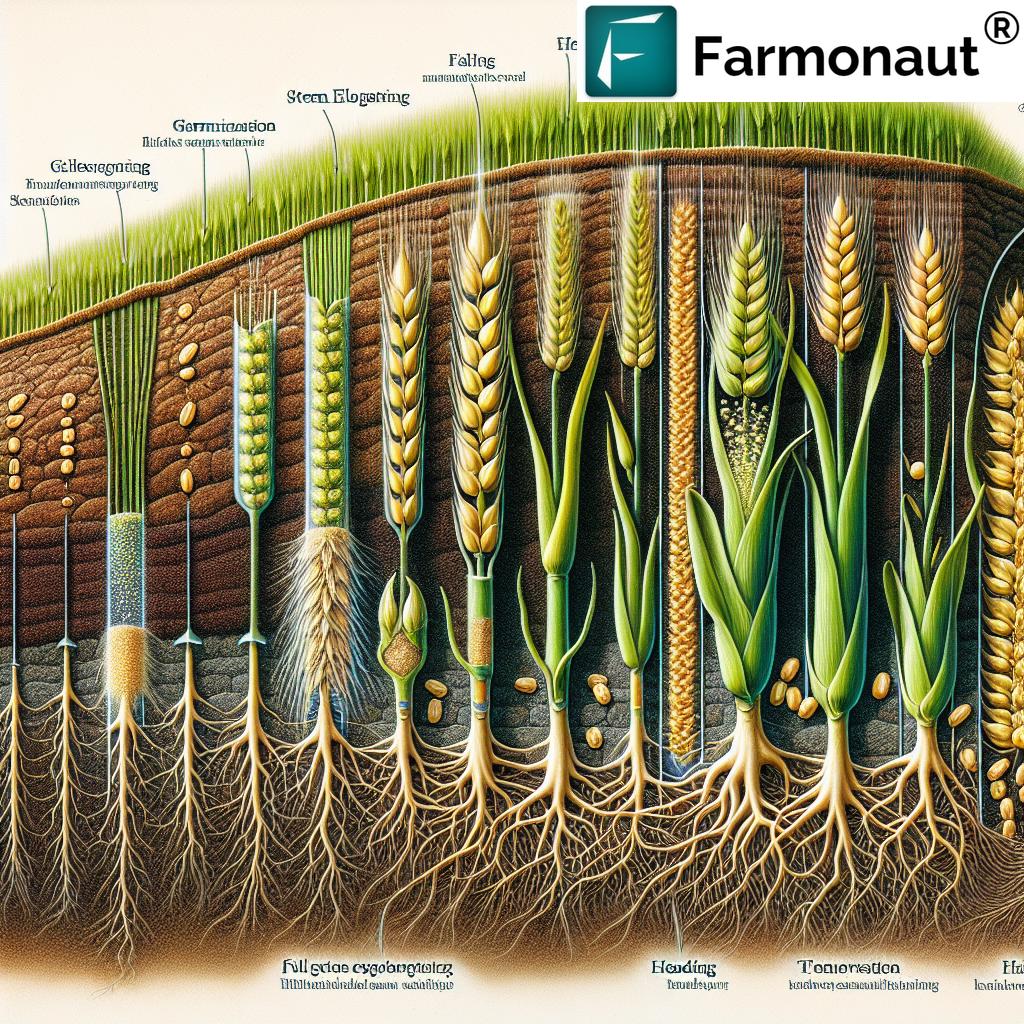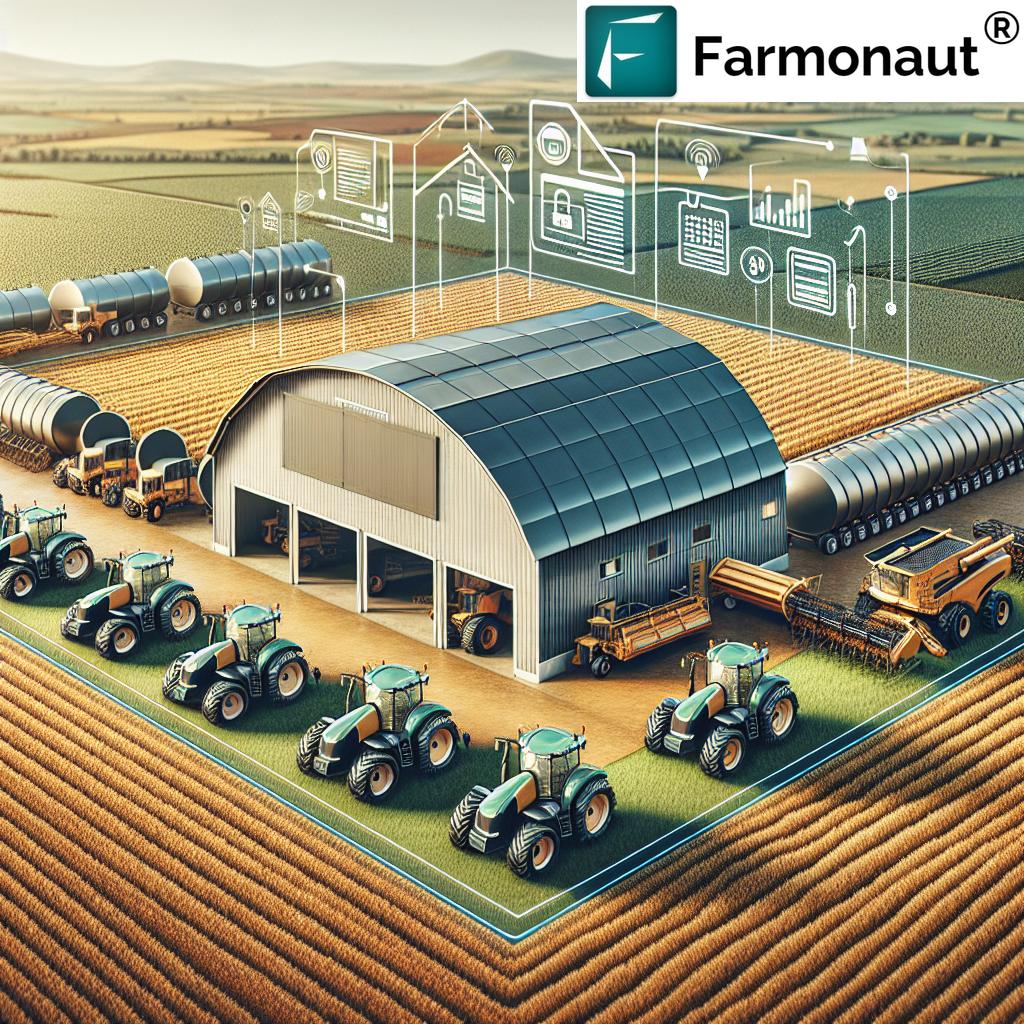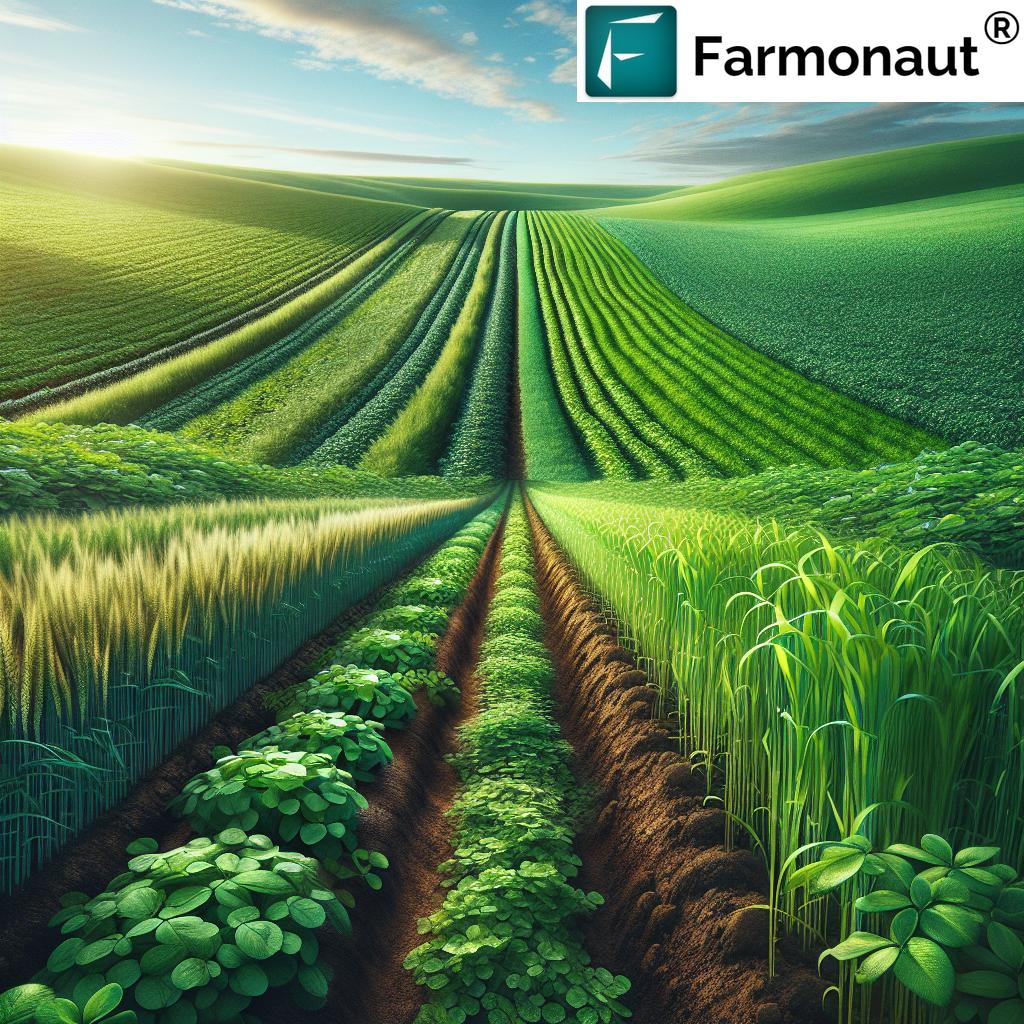Farming Technology for Investors: 7 Innovations Reshaping Agriculture in 2025
“By 2025, agri-tech investments are projected to surpass $30 billion globally, driven by precision and sustainable innovations.”
Introduction: The Agri-Tech Opportunity for Farming Investors in 2025
The agricultural sector in 2025 is undergoing a profound transformation, driven by farming technology for investors and powered by breakthroughs in precision, sustainability, and innovation. As global food demand, climate challenges, and resource constraints intensify, farming investors are seeking ways to boost growth, resilience, and sustainability. Now more than ever, understanding the latest technological advancements is critical to making informed investment decisions that yield long-term value and sustainability credentials.
From satellite-powered crop monitoring to AI-driven analytics, and from robotic field operations to blockchain-powered supply chains, new technology for farming is reshaping how assets are managed, resources are optimized, and risks are mitigated. This blog will explore the seven leading innovations in farming technology for investors in 2025 and how they are creating lucrative opportunities across the agriculture sector.
1. Precision Agriculture: At the Heart of Modern Farming Technology for Investors
Precision agriculture is no longer a futuristic concept—it’s the heart of modern farming technology and a critical investment focus for farming investors in 2025. By harnessing GPS-guided machinery, remote sensing, drones, and IoT sensors, precision agriculture enables farmers and enterprises to optimize resource use, maximize yields, and refine farm management at a previously unthinkable resolution.
- Utilizing detailed remote sensing and actionable insights, precision agriculture allows continuous monitoring of soil health, moisture levels, and crop conditions.
- IoT devices and smart sensors enable real-time data collection to fine-tune inputs—such as water, fertilizer, and pesticides—minimizing waste and input costs.
- GPS-guided tractors and drones ensure operations are efficient, precise, and scalable, reducing operational costs and human error.
For investors in farming, companies deploying these solutions:
- Demonstrate lower risk, thanks to improved data-driven management and resource allocation.
- Showcase improved productivity and sustainability, with the ability to back enterprises that reduce waste and elevate environmental credentials.
- Unlock better profit margins by maximizing yields and optimizing input costs, directly improving the bottom line.
The investment potential in precision agriculture has accelerated as global market growth projections skyrocket—driven by satellite imagery, data analytics, and scalable sensor platforms. Emerging regions, such as California, Australia, and India, are spearheading adoption, making this a global trend.
Farming investors benefit not just from yield increases but from risk reduction, deeper market insights, and the ability to support sustainable agriculture—a top priority in the current climate-conscious economy.
2. Automation & Robotics: Reshaping Operational Efficiency for 2025’s Investors in Farming
Operational challenges in agriculture—such as labor shortages, inefficiencies, and rising costs—have accelerated the adoption of advanced automation and robotics. In 2025, these technologies are reshaping farm management and scaling potential.
- Autonomous tractors and robotic harvesters are reducing labor dependencies and allowing farms to operate with fewer human constraints.
- Smart irrigation systems, utilizing real-time data, ensure optimal water delivery, slashing waste and costs.
- Drones and monitored equipment fleets permit precision management of vast fields, improving scalability.
Investors in companies deploying these solutions:
- Benefit from lower operational costs and reduced dependencies.
- Gain exposure to ventures capable of efficiently scaling operations regardless of workforce changes.
- Experience stronger margins and improved sustainability, given efficient input use and reduced greenhouse emissions from optimized machinery cycles.
With the growing popularity of fleet management and telematics, Farmonaut’s fleet management solutions (Fleet & Resource Management) enable agricultural enterprises to cut logistical costs, improve equipment efficiency, and ensure operational safety. These capabilities position investors to capitalize on scalable, tech-driven farms.
3. Artificial Intelligence (AI) & Predictive Analytics: Advancing Risk Management in Agriculture
The integration of AI, machine learning, and predictive analytics within farming technology is fundamentally reshaping agriculture in 2025. AI-driven management systems and platforms use data to analyze patterns, forecast yields, and deliver real-time advisories. This boosts both profitability and risk mitigation for farming investors.
- AI-powered platforms can analyze extensive datasets, including weather patterns, soil conditions, pest presence, and market trends, driving informed crop selection and input management decisions.
- Predictive analytics enable better forecasting of yields, pest outbreaks, and price fluctuations, sharply reducing commercial risk and giving investors the data advantage.
- AI-driven advisory systems help farmers respond to climate events or optimize planting schedules.
Farmonaut’s own Jeevn AI Advisory System offers insightful, AI-driven decision support for agricultural management—delivering customizable strategies, weather forecasts, and actionable intelligence for users and enterprises alike. With large-scale farm management tools, organizations benefit from scalable, centralized, and data-driven operations.
Pro Tip for Investors: Over 60% of investors now prioritize AI-powered farming solutions in their portfolios—indicating AI’s dominance as a future growth area.
“Over 60% of investors consider AI-powered farming solutions a top priority for agricultural technology portfolios in 2025.”
4. Sustainable Solutions: Regenerative Agriculture & Carbon Tech as a Core Value Proposition
Sustainability is at the forefront of farming technology in 2025. Investors are backing ventures utilizing regenerative agriculture, carbon footprint monitoring, and innovative environmental management technologies.
- Regenerative practices such as no-till planting, biochar application, and AI-guided nutrient management restore soil health, sequester more carbon, and increase biodiversity.
- Precision cover cropping, rotational grazing, and multispectral satellite imagery enable precise monitoring of environmental metrics.
- Technologies that help farms measure and reduce their carbon footprint are increasingly in demand for both regulatory compliance and access to carbon credit markets.
For farming investors, integrating sustainability isn’t just about compliance—it’s about future-proofing investments against regulatory shifts and environmental pressures, making them more attractive to a global consumer base and financial institutions.
Platforms like Farmonaut’s carbon footprint monitoring (Carbon Footprinting) and environmental impact reporting help enterprises make better management decisions, track sustainability metrics, and unlock new financing (e.g., carbon credits).
This convergence of technological solutions and sustainability yields both a positive environmental impact and new economic opportunities for investors in farming.
5. Forest Technology: Monitoring, Sustainability, and Investment in Forestry
Forestry is also undergoing a digital revolution. Forest technology deploys satellite imagery, LiDAR, drones, and AI-powered analytics to monitor forest health, biomass trends, and sustainable timber production.
- Remote sensing tools detect illegal logging or monitor the success of reforestation and biodiversity initiatives.
- LiDAR creates detailed 3D forest models to support carbon sequestration projects and commercial timber management.
- Advanced satellite-based systems enable precise forest management—from pest control to resource allocation.
The global focus on climate change mitigation and the carbon credit market is creating new investment frontiers. Investors in forest technology support ventures balancing economic returns with environmental stewardship.
Farmonaut’s solutions (Crop, Plantation & Forest Advisory) utilize satellite and AI-driven monitoring to assist in forest health tracking, crop advisories, and environmental compliance, making it an attractive proposition for investors seeking sustainable returns in the forestry sector.
6. Vertical Farming & Controlled Environment Agriculture (CEA): Future-Proofing Urban Food Supply Chains
Vertical farming and controlled environment agriculture (CEA) are changing the narrative for urban food security and sustainable food supply chains. These technologies minimize land and water use through:
- Hydroponics, aeroponics, and aquaponics—producing high-value crops with greatly reduced water input.
- LED lighting and climate controls—enabling year-round production close to consumer markets, slashing transportation costs and emissions.
- Pest and disease management under controlled conditions—reducing chemical use and raising yield consistency.
As urbanization rises and supply chains become more complex, investing in CEA and vertical farming solutions offers:
- Rapid scalability and modular deployment in cities and peri-urban areas.
- Predictable ROI, as crops can be harvested year-round.
- Enhanced traceability and food safety—major selling points for consumer confidence post-pandemic.
For investors in farming, the rise of CEA represents an opportunity to capture growth in a market driven by urbanization, health-conscious consumers, and sustainability mandates.
7. Blockchain-Based Traceability: Transparency and Trust for Investors & End Users
Transparency along the agricultural supply chain is paramount—both for investors and for meeting consumer and regulatory demands. Blockchain-based traceability solutions are being adopted globally to secure, verify, and record every step in the farm-to-fork journey.
- Blockchain systems provide tamper-proof records, ensuring authenticity of produce, sustainable sourcing, and regulatory compliance.
- By integrating with IoT and satellite data, end-to-end transparency is achieved for every transaction and movement.
- Consumers are more confident and willing to pay a premium for products with verifiable origins; investors benefit from reduced fraud and increased market value.
Farmonaut’s platform offers robust product traceability solutions, ensuring secure and transparent journeys from farm to market for agriculture, forestry, and supply chain ventures.
Comparative Technology Impact Table: Investment Potential by Farming Innovation (2025–2030)
| Technology Name | Description | Investment Potential (Estimated ROI/Year) | Adoption Rate (2024 Estimate) | Sustainability Impact (CO₂ Reduction %) | Market Growth Projection (Estimated CAGR 2025–2030) |
|---|---|---|---|---|---|
| Precision Agriculture | Data-driven resource and yield optimization via IoT, satellite, drones | 15–20% | 58% | 18–25% | 13.2% |
| Automation & Robotics | Autonomous tractors, robotic harvesters, smart irrigation solutions | 18–23% | 41% | 16–22% | 12.5% |
| AI & Predictive Analytics | AI/ML-driven forecasting, decision support, climate risk mitigation | 20–25% | 38% | 16–20% | 14.1% |
| Regenerative Agriculture & Carbon Tech | Technologies supporting soil health restoration and carbon sequestration | 16–21% | 28% | 22–30% | 12.0% |
| Forest Technology | Remote and AI-driven forest resource and health monitoring | 14–19% | 23% | 20–26% | 11.7% |
| Vertical Farming & CEA | Multilevel, climate-controlled urban and peri-urban farming systems | 18–24% | 19% | 19–24% | 24.5% |
| Blockchain Traceability | Unbreakable supply chain transparency and fraud minimization | 16–22% | 25% | 15–20% | 18.3% |
This comprehensive table empowers investors to quickly compare investment opportunities, sustainability impact, and market growth of the top farming technologies reshaping agriculture in 2025 and beyond.
Satellite Technology for Precision Agriculture: Farmonaut’s Advantage
Satellite-driven farming technology is a game changer for precision agriculture, forest technology, and resource management. Farmonaut leverages multispectral satellite imagery, AI, blockchain, and machine learning to empower users with accessible, high-resolution, real-time monitoring.
- Agricultural Crop & Soil Monitoring: Multispectral imaging for NDVI & soil moisture helps in optimizing input use and maximizing yield potential.
- Environmental Impact Analysis: Actionable insights on carbon emissions empower informed decisions for sustainable farming and help comply with global regulatory standards.
- Fleet, Resource & Infrastructure Management: Fleet management tools optimize logistics and resource allocation—reducing waste and operational costs.
- Satellite-Based API Integration: Seamlessly add Farmonaut’s satellite data into your platforms via our robust API and developer documentation.
The ability to manage crop, plantation, and forest advisory operations at scale makes Farmonaut uniquely positioned for investors seeking technology-driven agricultural growth.
Farmonaut Platform & Product Highlights
-
Large-Scale Farm Management:
Real-time, AI-based solutions for enterprises, optimizing field, crop, and operational management at scale. -
Carbon Footprinting Platform:
Track, measure, and reduce CO2 emissions in agriculture, forestry, and carbon credit operations. -
Blockchain Traceability:
Enhance transparency and add consumer trust by recording every transaction securely, from crop field to table. -
Satellite-Based Crop Loan & Insurance Services:
Use satellite data for more accurate, fraud-resistant verification and improved access to financing. -
Crop, Plantation & Forest Advisory:
Support for crop planning, reforestation, and environmental compliance using real-time, AI-driven analytics.
Frequently Asked Questions: Farming Technology for Investors
1. What defines the best farming technology for investors in 2025?
The most promising technologies offer a blend of precision, sustainability, scalability, and profitable ROI. These include precision agriculture, AI and predictive analytics, automation/robotics, carbon/sequestration technologies, vertical farming, forest technology, and blockchain traceability.
2. How do AI and machine learning help investors reduce farming risk?
AI and ML can analyze vast datasets—such as weather, soil health, and market trends—to deliver predictive analytics, enabling proactive crop management, yield forecasting, and rapid response to threats or opportunities.
3. What is the importance of blockchain traceability in agriculture?
Blockchain ensures tamper-proof, fully traceable supply chains, which improves transparency, reduces fraud, strengthens brand value, and supports both consumer and regulatory requirements in the agriculture sector.
4. What are the sustainability benefits for farming investors using carbon tech and regenerative agriculture?
These solutions restore soil health, sequester more carbon, improve biodiversity, and often result in premium market access and eligibility for carbon credits—thereby increasing both the environmental and financial value of investments.
5. How can investors utilize Farmonaut for large-scale agriculture and forestry investment decisions?
Using Farmonaut’s management platform, investors gain real-time visibility on crop health, resource usage, environmental impact, and supply chain integrity—empowering high-confidence, data-driven investment strategies.
Conclusion: Capitalizing on Agricultural Tech Innovations in 2025 and Beyond
2025 marks a pivotal year for farming technology for investors. Driven by precision, sustainability, and operational innovation, the sector is redefining how investors in farming approach profitability, risk management, and social responsibility.
- Precision agriculture, automation, AI, regenerative solutions, forest technology, CEA, and blockchain traceability collectively unlock scalable, efficient, and sustainable agriculture operations.
- Farming investors benefit from stronger yields, predictive analytics, reduced operational costs, and future-proofed portfolios as technologies become widely adopted.
- Global capital flows and governmental support are accelerating this transformation, making agri-tech an impactful and profitable investment opportunity.
We at Farmonaut are committed to making satellite, AI, and blockchain-powered solutions affordable and accessible globally, empowering both individual users and large enterprises to stay ahead of the technology curve. By tapping into our platform, investors strengthen both their financial and environmental credentials.
Explore our platform and tools today or get started with our API to power your next agricultural investment. For more details and comprehensive guidance, our developer documentation is available.
For dynamic, resilient, and sustainable growth, there has never been a better time to invest in new technology for farming. The future of agriculture is being written today—with investors as key authors.











